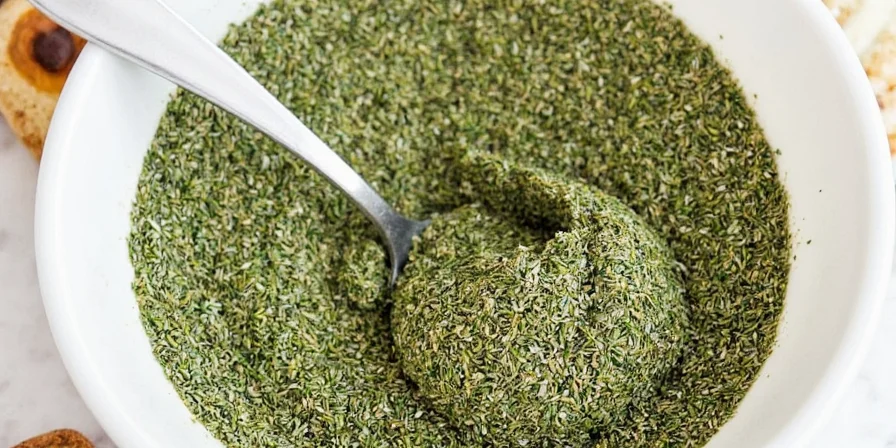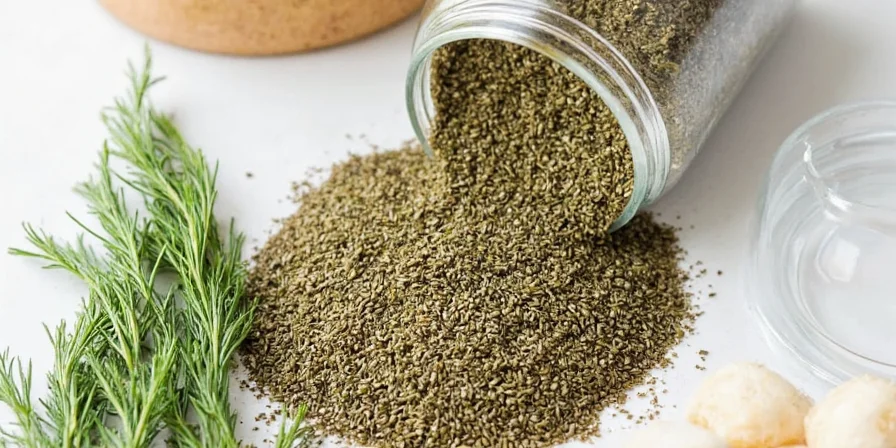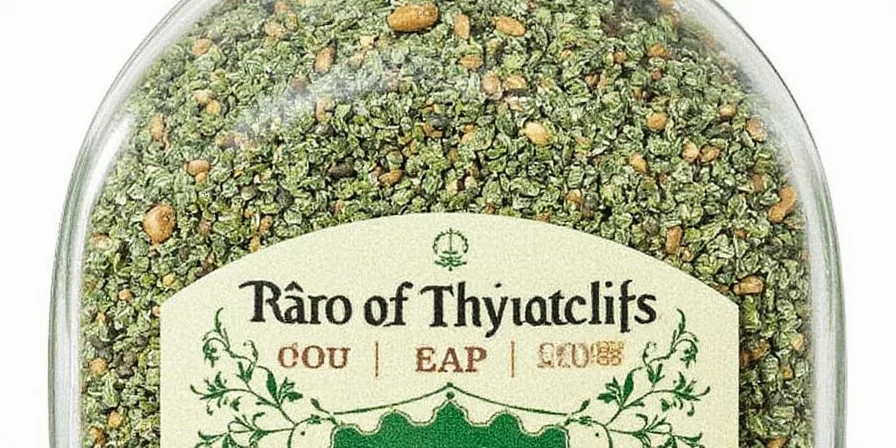The Secret Weapon in Your Pantry: Dill Seed Storage & Usage Hacks

Hey there, spice enthusiasts and culinary adventurers! If you're anything like me, you've probably stumbled upon a mysterious jar of dill seeds in your pantry and wondered, “What in the world am I supposed to do with this?” Well, fear not! Dill seed is not just a forgotten relic from your grandmother’s kitchen — it's a powerhouse of flavor with a ton of versatility that can elevate your cooking from “meh” to “wow.” In this blog, we’re diving deep into the world of dill seed storage and usage hacks, packed with practical tips, fun facts, and even a few secret recipes that’ll have you thanking your lucky stars for that dusty jar you found in the back of the cabinet.
What Exactly is Dill Seed?
Before we get into the nitty-gritty of storage and usage, let's clarify what dill seed actually is. Dill seed is the small, oval-shaped fruit of the dill plant, which is closely related to the fennel plant. Unlike dill weed — the feathery green leaves that are commonly used in pickling — dill seeds have a stronger, more pungent flavor that's slightly sweet with a hint of anise. Think of them as the grown-up, more intense version of dill weed, but with a flavor that's more concentrated and complex.
Flavor Profile of Dill Seed
Dill seed has a flavor profile that's best described as a mix between caraway, anise, and fennel, with a subtle peppery bite. It's not as sharp as caraway, nor as sweet as fennel, but it strikes a perfect balance between the two. This makes dill seed a great substitute in recipes where you want that classic dill flavor without the green herb.
Why Dill Seed is a Must-Have in Every Kitchen
Okay, now that we've demystified dill seed, let's talk about why it should have a prime spot in your kitchen. Dill seed is incredibly versatile. It can be used in both sweet and savory dishes, from baked goods to pickling solutions. It’s also a fantastic addition to spice blends, and it can even be used in beverages like herbal teas and cocktails. Whether you're a home cook or a professional chef, dill seed is a spice that deserves more love and attention.
Common Uses of Dill Seed
- Pickling: Dill seed is a staple in many pickling recipes, especially for cucumbers, beets, and other vegetables.
- Baking: It can add a unique, aromatic flavor to breads, cakes, and cookies.
- Meat Rubs: It pairs well with pork, chicken, and fish, adding a subtle depth of flavor.
- Cooking Sauces: It can be used in mayonnaise, sour cream, and even in some types of mustard.
- Herbal Teas: It can be used in herbal teas for its mild, digestive-friendly properties.
Proper Storage of Dill Seed: Keeping That Flavor Fresh
Now that we've covered the “why,” let's move on to the “how.” Proper storage is crucial for preserving the flavor and potency of dill seed. Unlike some spices that can last for years, dill seed can lose its potency if not stored correctly. Here are a few expert-level tips to keep your dill seed in top shape:
1. Use Airtight Containers
Dill seed is highly susceptible to moisture and air, which can cause it to lose its flavor and potency over time. Always store it in an airtight container to keep out moisture and oxygen. Glass jars with tight-fitting lids are ideal, as they provide a barrier against both light and air.
2. Keep It Cool and Dark
Heat and light can also be enemies of dill seed. Store it in a cool, dark place — ideally in a pantry or a spice cabinet that's away from direct sunlight and heat sources like ovens or stovetops. A temperature between 60 and 70°F is ideal for long-term storage.
3. Avoid Moisture
Moisture is the number one enemy of any spice, and dill seed is no exception. Make sure your storage container is completely dry before adding the dill seed, and avoid storing it in areas that are prone to humidity, like near the sink or in the bathroom.
4. Label and Date
It might seem trivial, but labeling your dill seed with the date of purchase or opening can help you keep track of its freshness. Dill seed typically stays at its best for about 1 to 2 years if stored properly. After that, it can still be used, but it may not have the same intense flavor.
Maximizing Flavor: Usage Hacks for Dill Seed
Now that we’ve covered how to store dill seed, let’s talk about how to use it to its fullest potential. Here are some expert-level hacks that will help you make the most of this amazing spice:
1. Toast It First
Toasting dill seed before using it can unlock a whole new level of flavor. Simply heat a small amount of dill seed in a dry skillet over medium heat for a few minutes, until it starts to release a fragrant aroma. This process enhances the flavor and makes it more aromatic when used in cooking or baking.
2. Use It in Spice Blends
Dill seed can be a fantastic addition to spice blends, especially in Middle Eastern and Eastern European cuisines. It pairs well with coriander, cumin, and fennel, making it a great ingredient in garam masala, za’atar, and other dry spice mixes.
3. Grind It for Maximum Flavor
If you're using dill seed in baking or making sauces, grinding it into a fine powder can help release more of its flavor. A coffee grinder or a mortar and pestle can be used for this purpose. Just be sure to grind it just before using it, as ground spices tend to lose their potency faster than whole seeds.
4. Substitute for Dill Weed
If you're out of dill weed and need a substitute, dill seed can be a great alternative. However, keep in mind that dill seed is more intense than dill weed, so you should use it sparingly. A general rule of thumb is to use about 1 teaspoon of dill seed for every 1 tablespoon of dill weed in a recipe.
Recipes That Shine with Dill Seed
Now that we've covered storage and usage hacks, let's move on to some recipes that actually shine with dill seed. These are not just random ideas — they're tested and proven to deliver amazing results:
1. Dill Seed Pickling Mix
One of the most classic uses of dill seed is in pickling. Here's a quick and easy pickling mix that you can use for cucumbers, beets, or even onions:
| Ingredient | Quantity |
|---|---|
| Dill Seed | 1 tablespoon |
| Garlic | 3 cloves, minced |
| Black Pepper | 1 teaspoon |
| Salt | 1 tablespoon |
| Vinegar | 1 cup |
| Water | 1 cup |
Combine all the ingredients in a jar, and use it as a brine for your pickled vegetables. The dill seed adds a subtle, aromatic flavor that makes your pickles stand out from the rest.
2. Dill Seed Bread
If you're a bread lover, you'll be thrilled to know that dill seed can be used to make a flavorful, aromatic bread. Here's a simple recipe to get you started:
- 1 cup warm water
- 2 tablespoons honey
- 1 tablespoon active dry yeast
- 3 cups flour
- 1 teaspoon salt
- 1 tablespoon dill seed (toasted and ground)
Mix the yeast, honey, and warm water in a bowl and let it sit for 5 minutes until it becomes frothy. Add the flour, salt, and dill seed, and mix until a dough forms. Knead the dough for a few minutes, then let it rise in a warm place for about an hour. Shape the dough into loaves, place them in a baking dish, and let them rise again for 30 minutes. Bake at 350°F for 30-35 minutes, until golden and fragrant.
Comparing Dill Seed with Other Similar Spices
Now that we've covered the basics of dill seed, let's take a look at how it compares to other similar spices. This comparison can help you decide when and where to use dill seed in your cooking:
| Spice | Flavor Profile | Best Uses | Substitute for Dill Seed? |
|---|---|---|---|
| Dill Seed | Peppery, anise-like, slightly sweet | Pickling, bread, meat rubs | Yes |
| Dill Weed | Light, fresh, herbaceous | Sauces, salads, dressings | No |
| Caraway Seed | Strong, pungent, slightly bitter | German sausages, rye bread | Yes, but use sparingly |
| Fennel Seed | Sweet, licorice-like | Baked goods, sausages, teas | Yes, but flavor is different |
As you can see, dill seed is a unique spice with its own flavor profile that sets it apart from other similar spices. While it can be used as a substitute in some cases, it's important to understand the differences in flavor so you can make the best choices in your cooking.
Final Thoughts: Embrace the Power of Dill Seed
So there you have it — a comprehensive guide to dill seed storage, usage, and even a few recipes that showcase its incredible versatility. Whether you're a professional chef or just someone who loves to experiment in the kitchen, dill seed is a spice that deserves a place in your pantry. With proper storage and a few clever usage hacks, you can unlock a whole new world of flavor in your cooking. So go ahead — open that jar, take a whiff, and let the magic of dill seed transform your meals from ordinary to extraordinary.
Happy cooking, and remember: a little dill seed can go a long way!

Further Reading (No Links Included)
For more information on spice storage and usage, you can explore topics like:
- How to store other common spices like cinnamon, paprika, and cumin
- Proper techniques for grinding and toasting spices
- How to use spices in global cuisines
- DIY spice blends and mixtures
Whether you're a seasoned cook or just getting started, there's always more to learn about the world of spices. So keep experimenting, stay curious, and most importantly — have fun in the kitchen!
Until next time, keep your pantry stocked and your taste buds happy!











 浙公网安备
33010002000092号
浙公网安备
33010002000092号 浙B2-20120091-4
浙B2-20120091-4